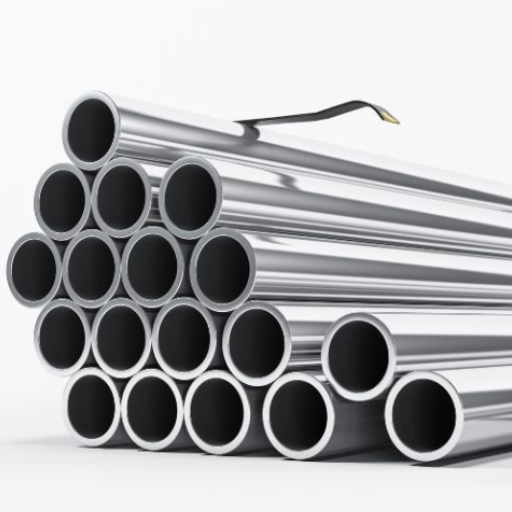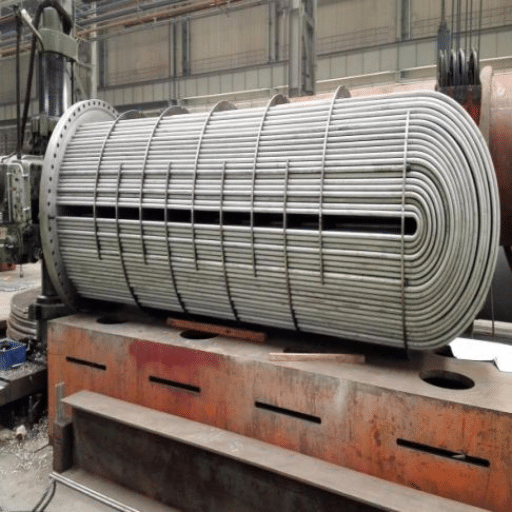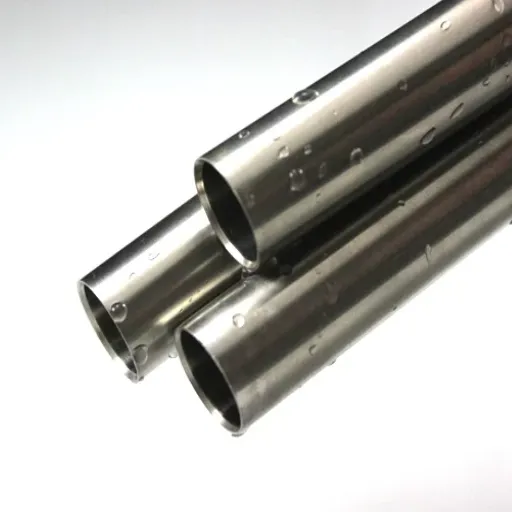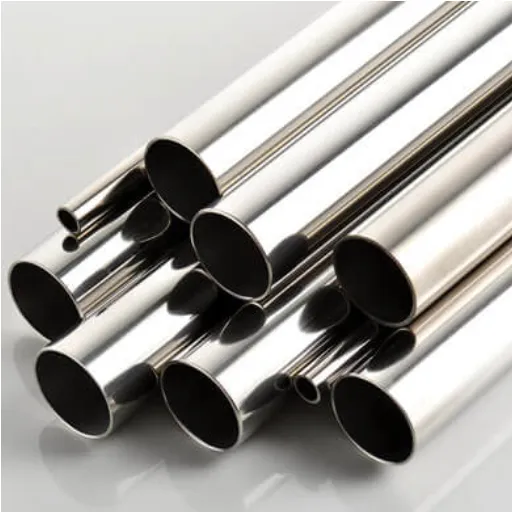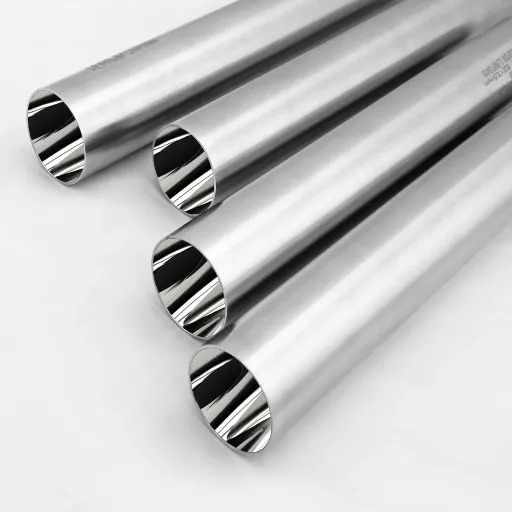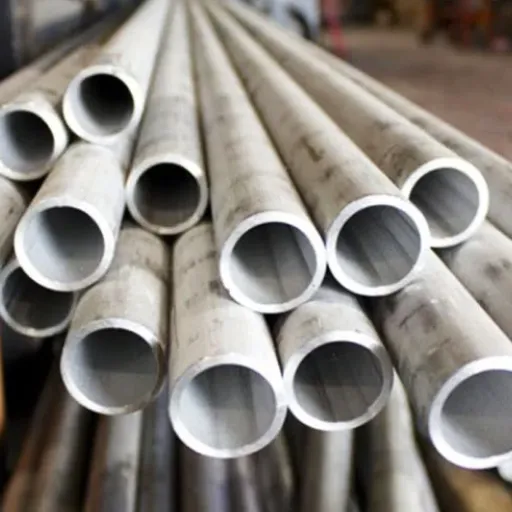Stainless steel differs from other metals in so many unique ways, fostering its prestige as a heat-conductivity-opposing metal. The significance of thermal conductivity of other metals like aluminum, copper, and brass, in stainless steel, has found an important role that helps shed light on engineering, manufacturing, and industrial applications. This article explores the fascinating niche of thermal conductivity, considering how stainless steel fares, what influences stainless steel in the act of conducting heat, and why these behaviors demand attention in actual applications.
Introduction to Stainless Steel
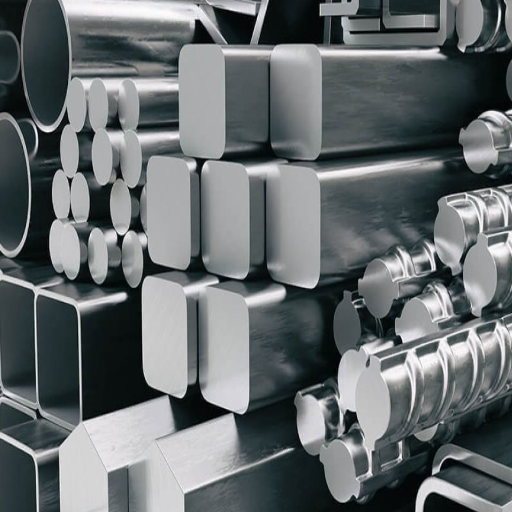
Definition and Composition
Stainless steel is a corrosion-resistant metal, being basically iron, chromium, and carbon. Having at least 10.5 percent chromium is considered essential, as the superficial oxide layer of chromium protects it from rusting and strengthens it. Additional components, including nickel, molybdenum, and manganese, may be included to provide resistance against other undesirable characteristics such as extreme temperatures or toughening mechanisms, depending on what the final stainless steel formation will be tailored to.
From its composition and structure, stainless steel can be divided into austenitic, ferritic, martensitic, or duplex stainless steel. For instance, austenitic stainless steels containing high amounts of chromium and nickel are non-magnetic and exhibit good corrosion resistance, making as a preferred choice for food-grade equipment and medical instruments. Conversely, ferritic stainless steels are magnetic and cheap and are found mainly in the automotive and construction sectors.
The key attribute that gives stainless steel its versatility is the nature of its composition, which can be altered for almost any purpose. The ability to withstand oxidation, maintain its integrity when subjected to heat, and resist attack by chemicals has rewarded this metal with profitable application in engineering, healthcare, and industrial production today.
Types of Stainless Steel
There are five primary categories of stainless steel, each having different microstructures, compositions, and properties. Each category has particular uses and offers unique advantages depending on local environmental and operational factors.
- Austenitic Stainless Steel: Being the most common, this type contains very high levels of chromium and nickel, respectively, to resist corrosion and provide flexibility. This type of stainless steel is non-magnetic and is used mainly for kitchenware, industrial piping, and chemical tanks.
- Ferritic Stainless Steel: Inexpensive because it contains less chromium and little to no nickel, ferritic stainless steel may be considered to provide average corrosion resistance. It is magnetic and is generally found in automotive parts and household appliances.
- Martensitic Stainless Steel: It is a very high-strength stainless steel that provides wear resistance, having an increased amount of carbon. It is employed in surgical instruments, knives, and turbine blades. Though it offers less corrosion resistance, and is not used in highly corrosive environments.
- Duplex Stainless Steel: Duplex stainless steel combines the advantages of both austenitic and ferritic structures: it achieves good strength and corrosion resistance. It is most commonly used in the oil, gas, and marine industries where durability and resistance to harsh conditions are necessary.
- Precipitation-Hardening Stainless Steel: It gives the highest strength and hardness. It is heat-treated to improve these properties greatly and is utilized in the aerospace industry and high-performance industries.
These various types of stainless steel make the material versatile for various needs, ranging from very mundane kitchen utensils to complex engineering and industrial usage. The type selection depends on the specific requirements of the application, including factors like strength, corrosion resistance, and cost.
Properties of Stainless Steel
Stainless steel is considered the material that resists corrosion to the greatest extent. The presence of chromium is exactly what causes the corrosion resistance. When the element comes in contact with oxygen, chromium forms a very thin metal oxide layer that acts as a barrier since it cannot corrode to form rust. The self-repairing nature of this oxide layer guarantees its durability even when subjected to very harsh conditions in marine or industrial environments.
The other great property of stainless steel is strength. High resistance to stress and wear makes it useful for heavy applications. The stainless steel also will not lose strength if there are high or low-temperature variations. Such considerations are pertinent to the aerospace and energy industries.
Another aspect with respect to stainless steel is that it is very versatile and hygienic. The surface is smooth with mold-resistant properties since it is quite impervious to bacteria. So, it is used widely in medical instruments, food processing, and kitchenware. This application, along with its general appeal and low maintenance, makes stainless steel a commonly preferred material in practically all sectors.
Thermal Conductivity of Stainless Steel
What is Thermal Conductivity?
Every material’s property, entitled thermal conductivity,y, gives the ability it has to conduct heat. It is the quantity of heat transferred through a unit thickness of the material from a temperature gradient, in the direction perpendicular to a unit surface area of the material. In the SI system, the measurement of thermal conductivity is generally in watts per meter-kelvin (W/m-K). Accordingly, materials with very high thermal conductivities, such as metals, are good heat conductors, whereas materials with very low thermal conductivities, such as wood and rubber, are good insulators.
Key Point: Stainless steel, even though it is prized for its versatility and corrosion resistance, has a relatively low thermal conductivity compared to metals like copper or aluminum. Depending on the grade and alloy, the thermal conductivity of stainless steel would be around 15 W/m-K at room temperature, far less than copper, which conducts heat about 400 W/m-K.
Low thermal conductivity means stainless steel takes a while to heat up evenly, and that can be beneficial or detrimental depending on what the situation demands. Thermal conductivity in stainless steel, therefore, has a bearing, especially when viewed from the standpoint of construction, manufacturing, and cooking. In cookware, for instance, low thermal conductivity keeps the heat even fora long time, but it would then require some design inputs to ensure even distribution of heat during use.
Measuring Thermal Conductivity
Thermal conductivity is a very important property to quantify if one wishes to know how well a material conducts heat. For this, the measurements need to be taken under proper methods and equipment, assuring accuracy and reliability of the results. The use of steady-state methods assumes a constant condition of heat transfer through the material. The other method being used more commonly is the transient method, for example, the laser flash, which is based on heating one side of a small test sample and measuring how rapidly heat diffuses through it.
Density, temperature, and structuring or the microstructuring of the material are other important parameters influencing the measurement of thermal conductivities. Metal conductivities, for example, usually decrease with increasing temperature since atomic vibrations, which impart resistance to the flow of heat through scattering, increase with temperature.
Thermal Conductivity Values of Various Stainless Steels
The thermal conductivity of various kinds of stainless steel varies with composition and hence influences its industrial application. Following are some common stainless steel types with their approximate thermal conductivity at room temperature (W/m·K):
- Austenitic Stainless Steels: 14-16 W/m·K – Lower conductivity but compensated by high corrosion resistance and ductility
- Ferritic Stainless Steels: 23-27 W/m·K – Higher thermal conductivity, suitable for heat exchangers
- Martensitic Stainless Steels: ~24 W/m·K – Good balance of strength and thermal performance
- Duplex Stainless Steels: 19-25 W/m·K – Intermediate solution balancing strength with thermal power
Factors Affecting Thermal Conductivity

Temperature Variations
Thermal conductivity in stainless steels is almost influenced by temperature changes. Higher temperatures intensify the lattice vibrations within the material, breaking apart the orderly passage of thermal energy and resulting in a decrease in thermal conductivity. The converse is true: The vibrations become less observable at lower temperatures, making heat transfer easy. This behavior with temperature variations becomes a pertinent issue when systems are designed to function under extreme thermal environments, for example, industrial furnaces or cryogenic setups.
Alloy Composition
The alloy composition stands as a key to the physical and thermal properties of stainless steel. A stainless steel with a core of iron is considered to have, by weight, at least 10.5% chromium. This chromium content imparts rust resistance on the surface. The presence of these elements varies with application – the actual elements might include nickel, molybdenum, manganese, and nitrogen.
- Nickel: Imparts ductility and toughness to stainless steels
- Molybdenum: Improves pitting and crevice corrosion resistance
- Chromium: Primary element for corrosion resistance
- Carbon: Affects strength and thermal properties
Manufacturing Processes
The manufacturing of stainless steel requires several sophisticated and highly engineered operations to ensure high quality and sturdiness. The process starts with the melting of raw materials in the electric arc furnace at very high temperatures. Usually, iron ore is mixed with chromium, nickel, and other elements. The mixture is then refined to impart purity by removing impurities and to modify the composition of alloys to have the desired properties.
Comparison of Stainless Steel’s Thermal Conductivity with Other Metals
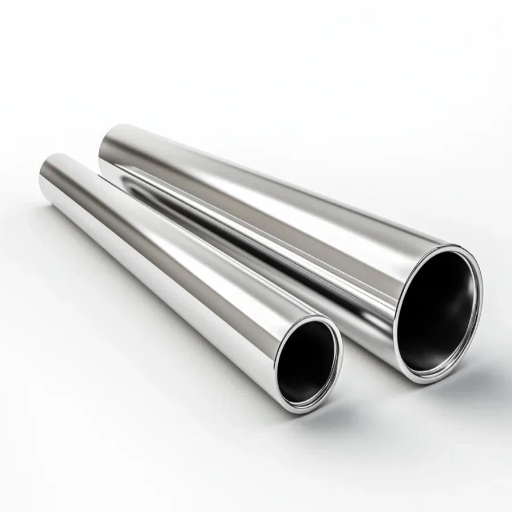
Stainless Steel vs. Copper
Stainless steel has lower thermal conductivity, and the corrosive effects upon it are less severe, while strength is a characteristic of the material. Copper is better for thermal and electrical conduction, so the materials find their uses accordingly.
| Aspect | Stainless Steel | Copper |
|---|---|---|
| Heat Transfer | Low (15-25 W/m·K) | High (400 W/m·K) |
| Energy Flow | Low | High |
| Rust Resistance | High | Moderate |
| Durability | High | Moderate |
| Mass | Heavy | Lighter |
| Expense | Moderate | Higher |
| Longevity | High | Moderate |
| Usage | Structures, Tools | Wiring, Cooling |
Stainless Steel vs. Aluminum
Grades of stainless steel are stronger, heavier, and corrosion-resistant; however, aluminum grades are lighter and softer and more thermally conductive and easily machined.
| Aspect | Stainless Steel | Aluminum |
|---|---|---|
| Strength | High | Moderate |
| Weight | Heavy | Light |
| Heat Transfer | Low (15-25 W/m·K) | High (235 W/m·K) |
| Rust Resistance | High | Moderate |
| Machinability | Moderate | High |
| Cost | Moderate | Lower |
| Durability | High | Moderate |
| Usage | Tools, Structures | Aircraft, Cooling |
Stainless Steel vs. Carbon Steel
Stainless steel is much more corrosion-resistant and long-lasting, while carbon steel is extremely strong, lighter on the budget, but excellent in the conduction of heat.
| Aspect | Stainless Steel | Carbon Steel |
|---|---|---|
| Strength | Moderate | High |
| Rust Resistance | High | Low |
| Heat Transfer | Low (15-25 W/m·K) | High (43-60 W/m·K) |
| Weight | Heavy | Moderate |
| Cost | Higher | Lower |
| Durability | High | Moderate |
| Machinability | Moderate | High |
| Usage | Tools, Appliances | Pipes, Structures |
Applications of Thermal Conductivity in Stainless Steel
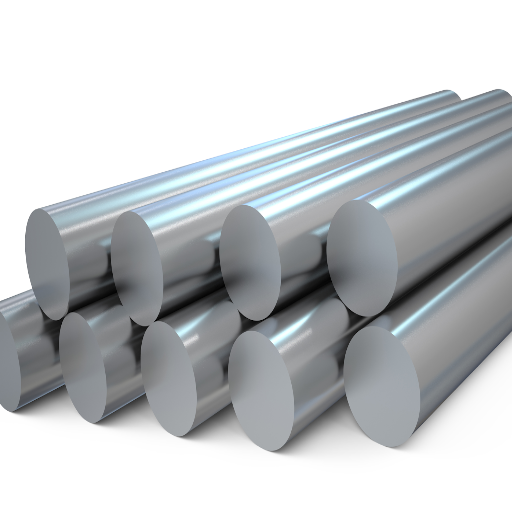
Heat Exchangers
Nonetheless, stainless steel is favored as a material for heat exchangers, attributed to its corrosion resistance and strength. These properties make it suitable to be subjected to an environment in which fluids, gases, or any other materials would cause rust or erosion on the metallic surface. Thermal conductivity of stainless steel, being much less than that of carbon steel, is still adequate in many processes, mostly complemented by its strength and chemical resistance.
Stainless steel heat exchangers are commonly used in:
- Food processing industries
- Pharmaceutical applications
- Chemical industries
- Marine environments
Kitchen Appliances
Being corrosion-resistant, durable, and aesthetically pleasing, stainless steel finds primacy in kitchen appliances. Some popular stainless steel kitchen appliances include:
- Refrigerators: Stainless steel refrigerators have a chic look and are easy to clean and resist smudges and fingerprints. Many models come with the latest smart technology and energy-efficient compressors.
- Ovens: While stainless steel ovens are built to provide even heat and ensure proper heat treatments for dishes, they can bear stains caused by splattering from foods.
- Dishwashers: They are sought after since stainless steel dishwashers ensure silent operations and deliver quality washing. The stainless interior keeps heat well, thereby enhancing drying.
- Microwaves: Microwaves with stainless steel surfaces are sleek and practical at the same time. The stainless surface withstands dents and scratches, is resistant to wear and tear from busy households.
- Toasters: Stainless steel toasters are known for being durable and for their ease of cleaning. Many models also allow you to select the level of browning for perfect toasting every time.
Industrial Equipment
In industrial equipment manufacture, stainless steel is the preferred material from construction to assembly, given the strength and corrosion resistance it offers in extreme conditions. Being non-reactive, this steel proves to be the best option when hygiene and safety are utmost priority, such as in the food processing, pharmaceutical, and chemical industries.
Key advantages in industrial applications:
- Resistance to environmental conditions
- Maintains integrity for long-term operations
- Easy to maintain and clean
- Reduces downtime and maintenance costs
- Extends equipment life
Frequently Asked Questions (FAQ)
References
- Local thermal conductivity mapping of selective laser melted 316L stainless steel – This investigation explores the thermal conductivity of 316L stainless steel made by selective laser melting.
- Thermal contact resistances in a thermal conductivity test system – Research on thermal contact conductance and testing of thermal conductivity using stainless steel.
- Quantifying Variability in Laser Welding of Stainless-Steel Alloy 304 – This paper encompasses the study of thermal conductivities and other material properties affecting the welding of stainless steel.
- Experimental Measurement of Thermal Conductivity of an Unknown Material – Comparisons are drawn between experimental thermal conductivity measurements for stainless steel.
- The thermal conductivity of AISI 304L stainless steel – A critical analysis of the thermal conductivity of AISI 304L stainless steel over a very wide temperature range.

